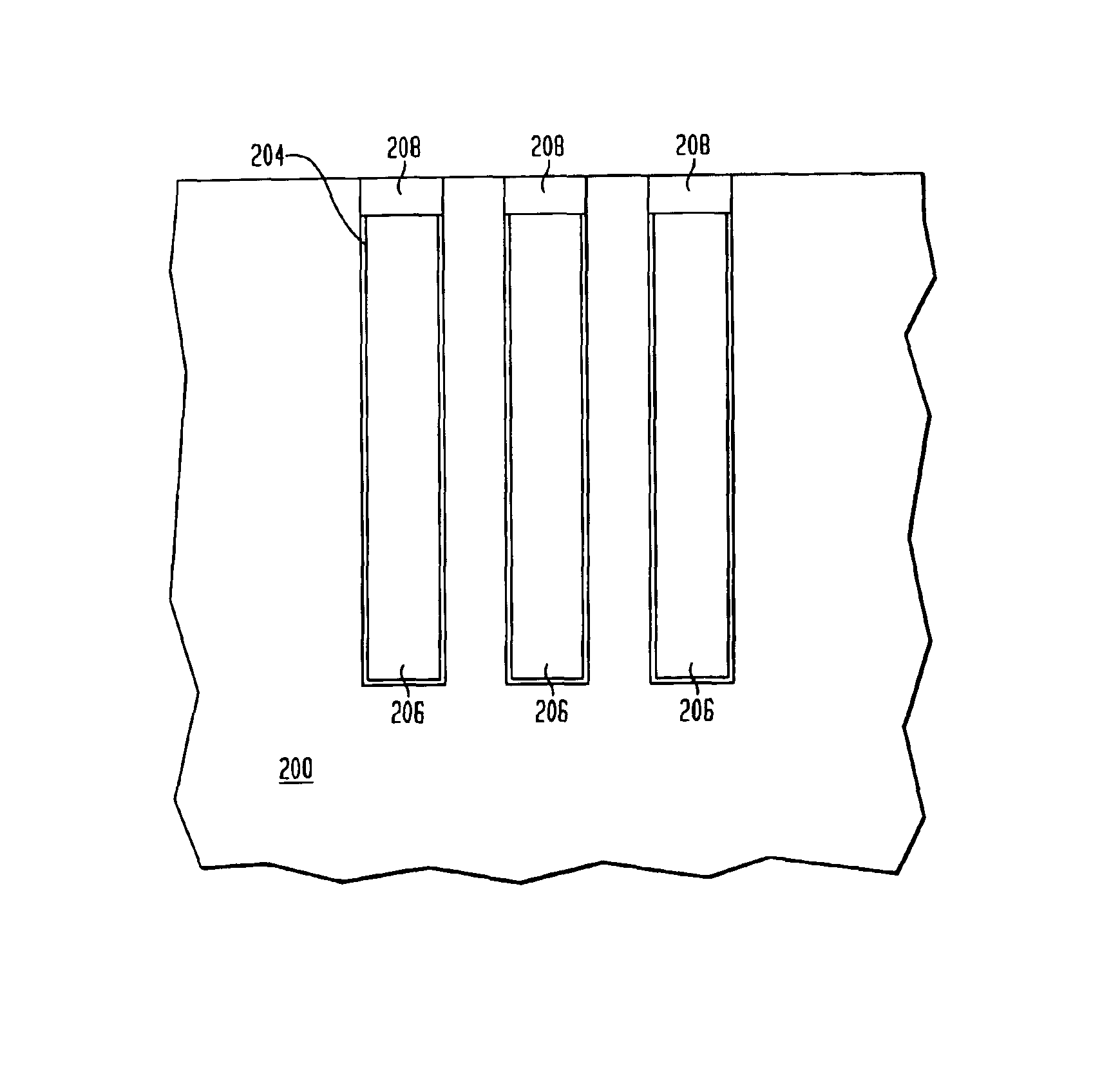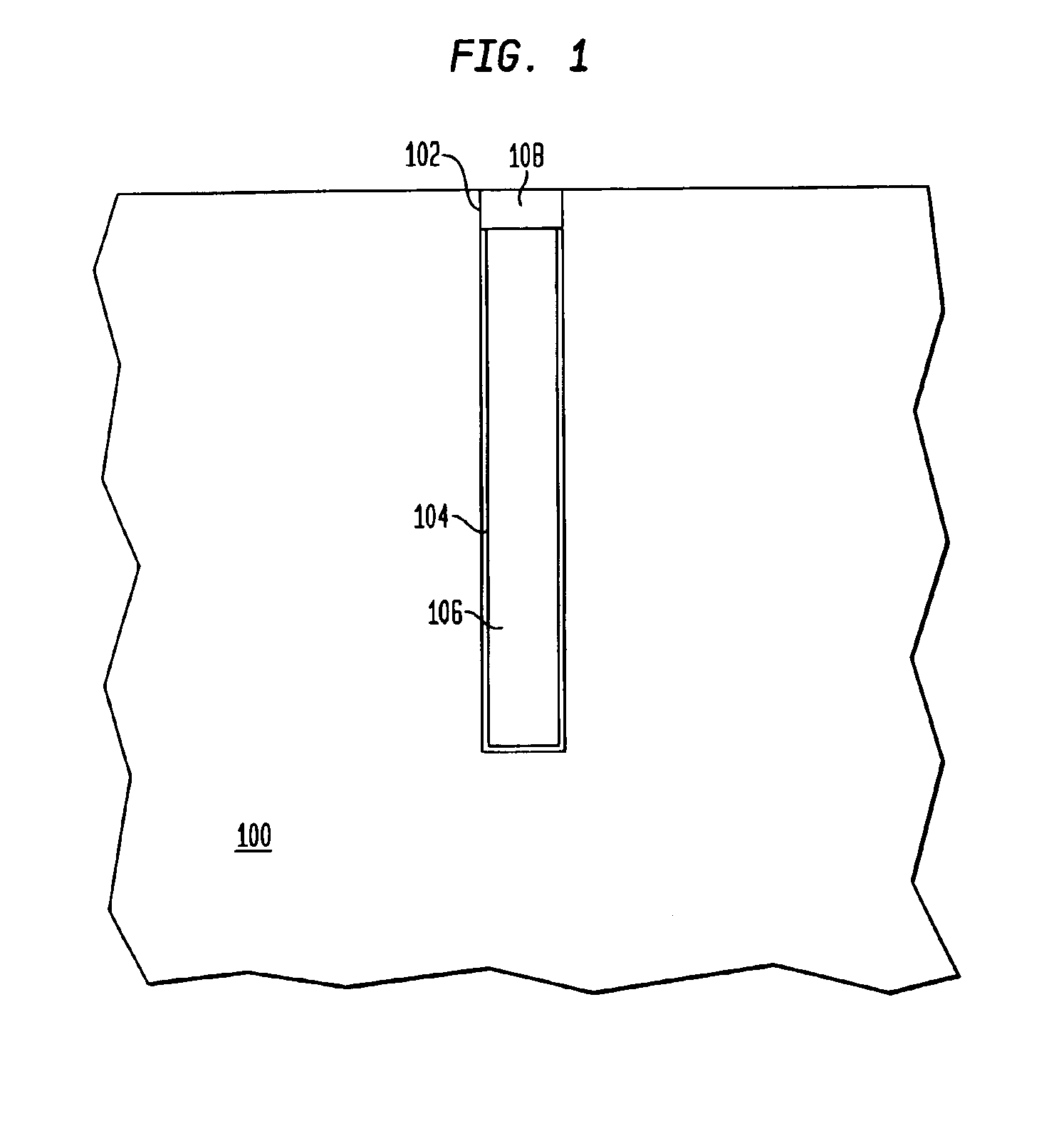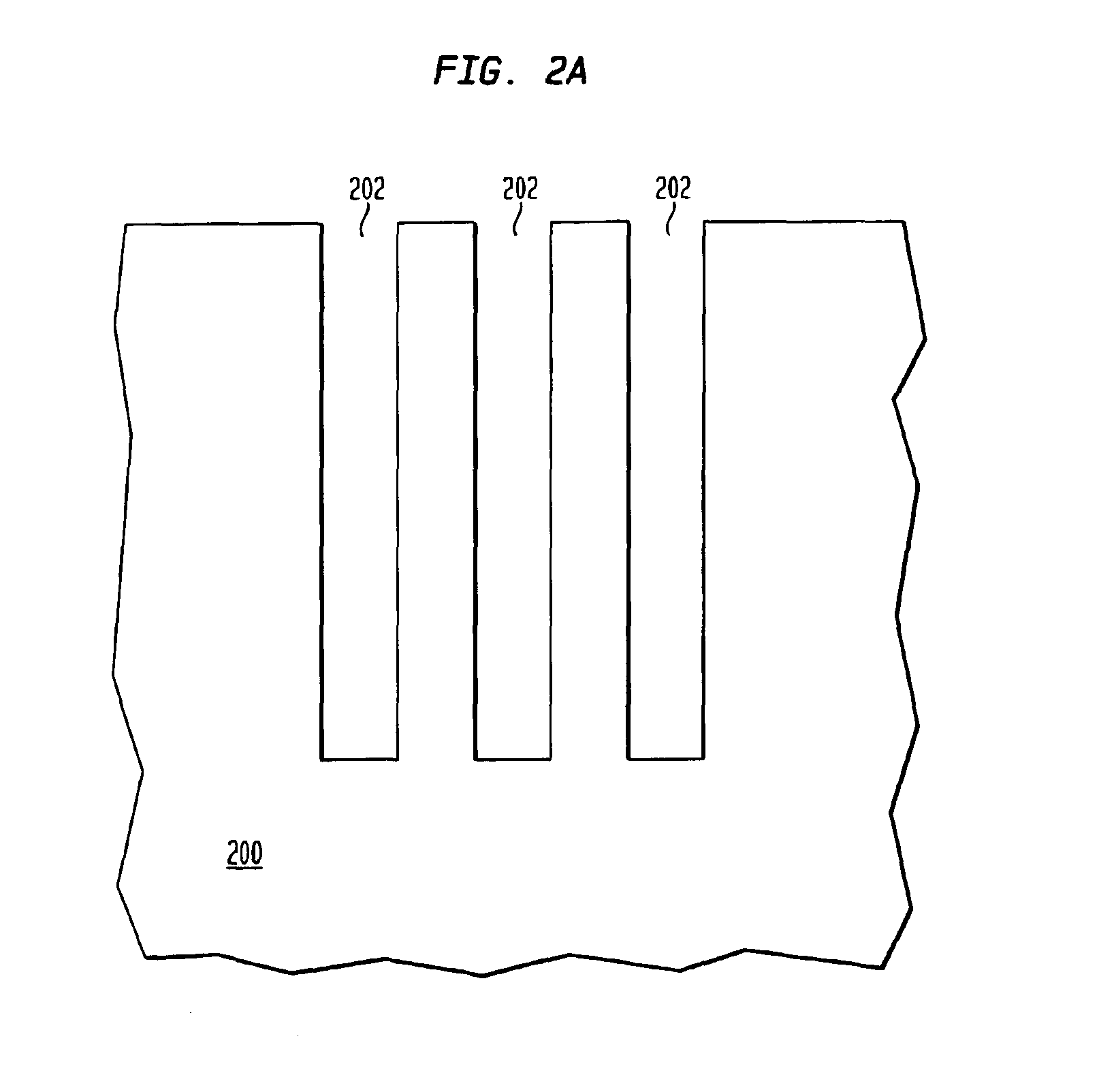Trench isolation employing a doped oxide trench fill
a technology of doped oxide and trench filling, which is applied in the manufacturing of semiconductor/solid-state devices, basic electric elements, electrical equipment, etc., can solve the problems of changing the characteristics of the device, increasing the aspect ratio, and unsuitable known methods, and achieves acceptable interface quality
- Summary
- Abstract
- Description
- Claims
- Application Information
AI Technical Summary
Benefits of technology
Problems solved by technology
Method used
Image
Examples
Embodiment Construction
[0024]FIG. 1 shows a cross-sectional view of a portion of a substrate in which a trench structure is formed in accordance with the invention. A trench 102 having an aspect ratio of at least 5:1 is formed in a semiconductor substrate 100. The bottom and sidewalls of the trench 102, except for the uppermost portion of the trench, is lined with a thin liner material 104, which is typically a high-quality silicon oxide (SiO2) layer of about 100 Å thickness that is covered with an about 60-200 Å thick layer of silicon nitride (SiN).
[0025]The high-quality silicon oxide formed next to the substrate 100 ensures a low leakage (i.e., low trap generation) current of typically less than about 50 fA / μ2. To obtain such a low leakage current, a substantially good interface is needed between the substrate 100 and the liner 104. The interface quality is determined by measuring the density of mid-gap the energy states at the silicon interface which is an indication of the number of charge traps and / o...
PUM
 Login to View More
Login to View More Abstract
Description
Claims
Application Information
 Login to View More
Login to View More - R&D
- Intellectual Property
- Life Sciences
- Materials
- Tech Scout
- Unparalleled Data Quality
- Higher Quality Content
- 60% Fewer Hallucinations
Browse by: Latest US Patents, China's latest patents, Technical Efficacy Thesaurus, Application Domain, Technology Topic, Popular Technical Reports.
© 2025 PatSnap. All rights reserved.Legal|Privacy policy|Modern Slavery Act Transparency Statement|Sitemap|About US| Contact US: help@patsnap.com



